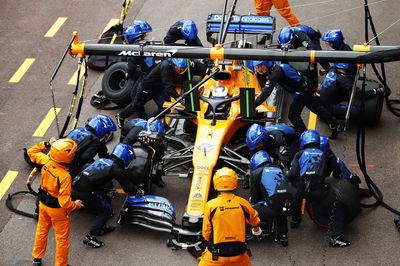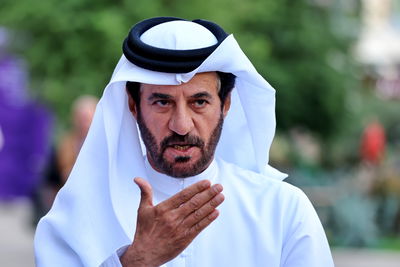Tech: How the FIA's tender process for 2021 standard parts works
Talks surrounding Formula 1’s planned overhaul of its technical regulations for 2021 may be ongoing as officials look to meet the deadline at the end of the month, but the first steps towards the rule changes are already underway via the FIA’s tender process.
The goal of the new rules is to not only make F1 more competitive and improve the on-track spectacle, but also to reduce costs as the sport pushes to introduce a budget cap for the first time in its history.
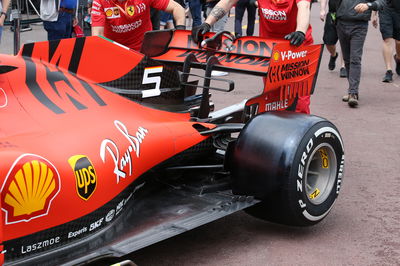
Talks surrounding Formula 1’s planned overhaul of its technical regulations for 2021 may be ongoing as officials look to meet the deadline at the end of the month, but the first steps towards the rule changes are already underway via the FIA’s tender process.
The goal of the new rules is to not only make F1 more competitive and improve the on-track spectacle, but also to reduce costs as the sport pushes to introduce a budget cap for the first time in its history.
While there will be sporting and commercial rules focusing on budget restrictions, efforts are also being made by the FIA to encourage a cut in costs – albeit in a realistic manner, as head of single-seater matters Nikolas Tombazis explained.
“One of our major objectives for 2021 is to reduce costs, and we want to achieve that with a number of different measures, both on financial regulations and also on the technical regulations,” he said.
“The costs in some cases have escalated so much, so if we just say we need to cut 50 percent off every single item, then I think then we worry that we would create an unmanageable situation. It would reduce the costs too much in some areas which arguably cannot be reduced. And it would perhaps then dumb down Formula 1 to a point where it is not as exciting technologically.
“Having excluded that possibility, we need to make more big savings in certain areas, and maybe leave some areas alone or with smaller savings. On the technical side of the car, we have selected which areas we feel are the real battlegrounds of technology between competitors, and where they really make a difference. We want to promote differentiation there.
“And areas maybe where technologies have converged more or less and there is a lot of expenditure on certain things, but maybe everyone does almost the same thing, but nonetheless spends a lot of money, we’ve identified these areas and said these are potential areas that can be standardised.”
The mention of standardisation may concern F1 fans that a spec formula could be on the horizon, but Tombazis stressed that these parts will not have an impact on the appearance of the cars, nor will they deter innovation from teams: “We don’t think there’s anything that the spectator would really associate with a thing spoiling Formula 1 or something. We’ve selected things which we think are good, low-hanging fruit, but not detracting from the technological sport which we want to be. We don’t want to create a one-make formula.”
With a number of components set for standardisation identified, the FIA has split them into two categories: standard components and prescribed components.
“A standard component is something where we have to launch a tender, and we would make a specification, and suppliers would make a bid,” Tombazis explained. “They’d have to say we can supply this component for so much money; so many in a year - they’d give us a full technical description and financial description for the proposal. And on that basis, we have to make a proposal, go into more detail, and the decision to select such a bidder.
“The alternative is to make a component be prescribed, meaning that the FIA issues a drawing for something with full specification of dimensions, tolerances, materials, surface finishes, every single aspect, and competitors can then make it either in-house or with an external supplier, or even sell it to another competitor.”
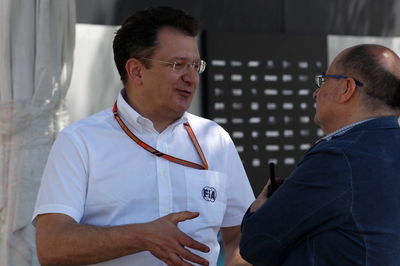
The standard components are subject to the FIA tenders that have been issued recently, calling for expressions of interests from potential suppliers. So far, wheel rims, gearbox cassettes, brake system components and fuel system components are the four areas for which a public tender has been issued, all covering 2021-24. Another “seven or eight” are planned to follow in the lead-up to 2021.
“We issue a tender document, a request to submit bids on our website, and with certain deadlines, and people typically submit a bid. And then we make a detailed analysis of what we’ve been offered, both in terms of the technical competence of who is trying to supply the particular component, and the financial aspects, and in terms of how those financial aspects compare to what the teams are currently spending,” Tombazis said.
“We then submit to the World Motor Sport Council a proposal, saying that we believe that for a particular tender on component X, we have A B C different offers, we feel A is good technically, financially it’s that, so we make a proposal. Then the World Council would have to either accept our proposal or not.”
Should the WMSC reject the proposal, or should the FIA feel it has not received an appropriate tender, it is not a case of just going back to the drawing board. The FIA may opt to abandon the plan to make it a standard component – as was done with the gearbox cassettes last month.
“We may decide a component does not go ahead as a standard component, because we don’t have a bid that we feel fully satisfies our requests,” Tombazis said. “That can be either because of it failing to achieve technically what we want, or it may be because it’s financially not saving any money. There may be a number of reasons. So launching a tender doesn’t automatically mean there is going to be one approved.”
The FIA statement confirming gearboxes would not become standard parts cited its analysis as finding that “similar financial savings could be made by means other than the specification of a single supplier”. Reliability was also a big concern, as is likely for any standard part that is provided by an external supplier to the F1 teams.
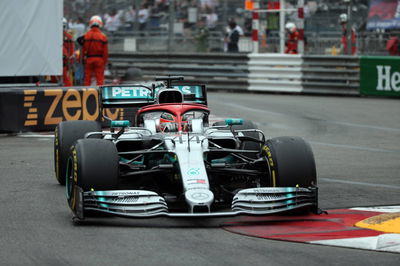
Mercedes team boss Toto Wolff expressed his support for the decision, saying that while he was in support of standard parts in principle, it was not worth sacrificing reliability if no major cost saving could be made.
“I think in non-performance parts, where we’re really able to save a lot of money, then we should really aim for [standardisation],” Wolff said. “But if there is no saving, just complexity, a risk of reliability and failure, we shouldn’t be following those rules. On this principle, I’m on board.
“You have to question that if someone else is in-between an independent supplier, that company would need to make a margin to produce a product cheaper than us with the same specifications. And that sounds like a little bit of a tricky endeavour.
“I can tell you from Mercedes’ standpoint, we’re open-minded to reduce costs, and if there is a possibility for saving on non-performance parts, we’re up for it.”
Tombazis has found a mix of views from the F1 grid when it comes to standard parts and cost saving. Some are happy spending more money for a marginal performance gain; others are eager for the FIA to step in and stop them splashing the cash.
“Some teams are asking [for standardisation], some teams are not,” he said. “Some teams do have cost control on their own and they’re trying to operate on sensible levels. Some teams are not. They’ve got 10 different business models, so they don’t have exactly the same outlook. But yes, we do get such comments on occasion.”
Appeasing all 10 teams is a tightrope all of F1’s major players are trying to tread carefully right now, with the FIA’s tender process being just one example of how a positive change is trying to be put in place for 2021 with minimal sacrifices.
FIA Tender Process In Short
1. The FIA identifies components suitable for standardisation on grounds of cost saving or policing. While this is discussed with the F1 Strategy Group, its approval is not required.
2. If the component is defined as being a ‘standard component’ instead of a ‘prescribed component’, a tender will be issued asking for suppliers to express interest.
3. After the submission deadline, the FIA will evaluate the suppliers’ proposals, factoring in technical competence and financial aspects.
4. If one is deemed suitable, the FIA will put forward the supplier to the World Motor Sport Council to decide on for the tender. The WMSC is entitled to approve or reject the bid, or decide not to go ahead with making the part a standard component.
5. If approved, the standard component will be introduced for the 2021 season for four seasons, with provisions in place in the regulations should the supply fail (ie the supplier withdraws).
